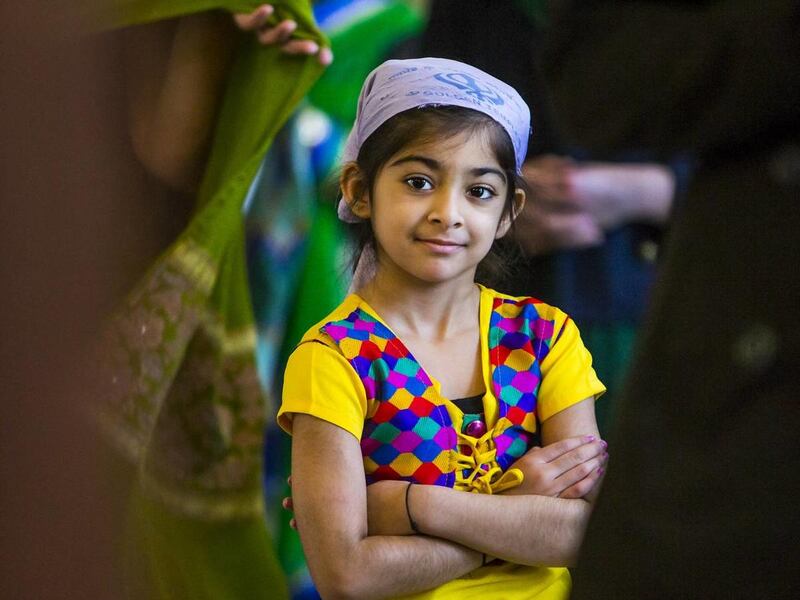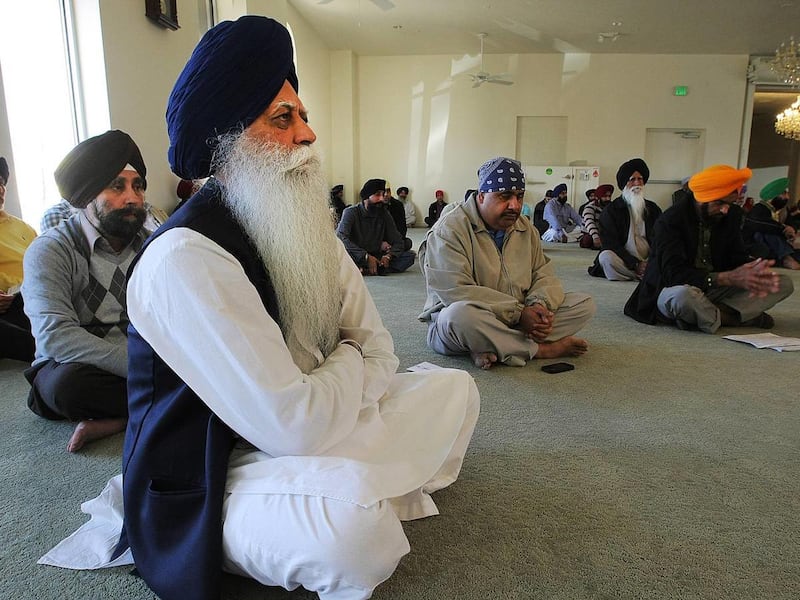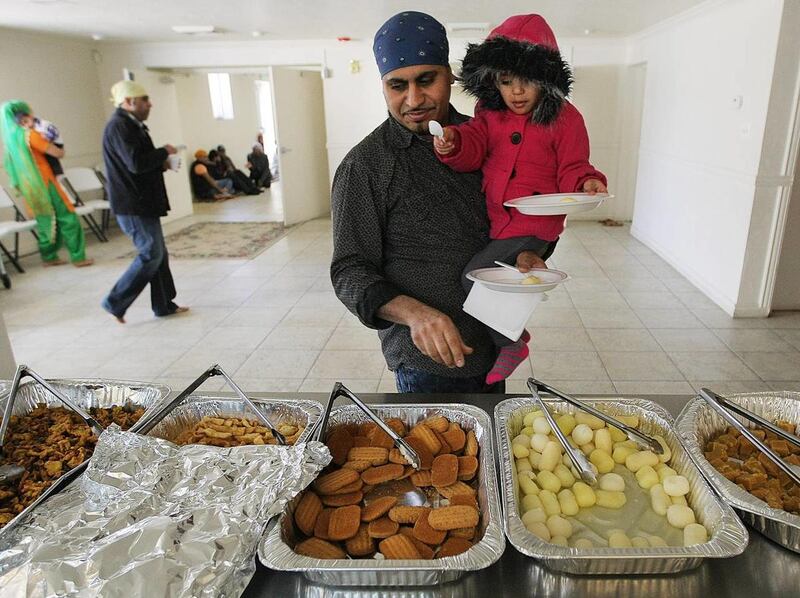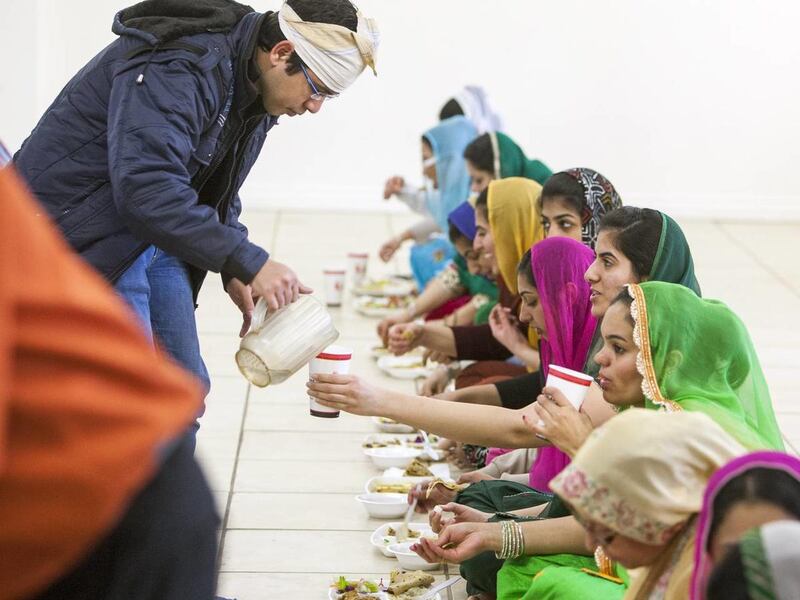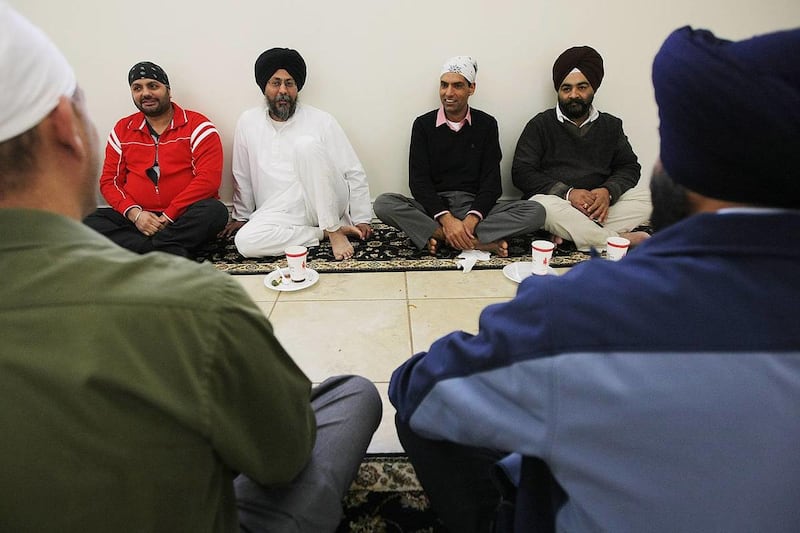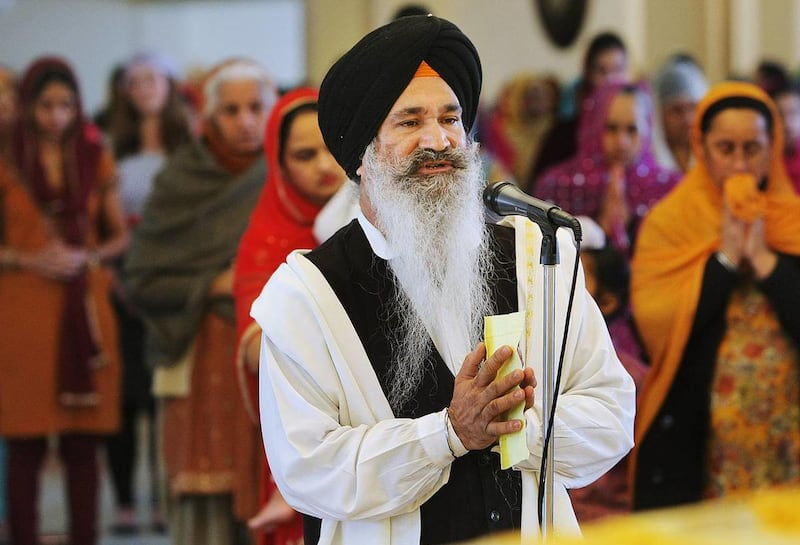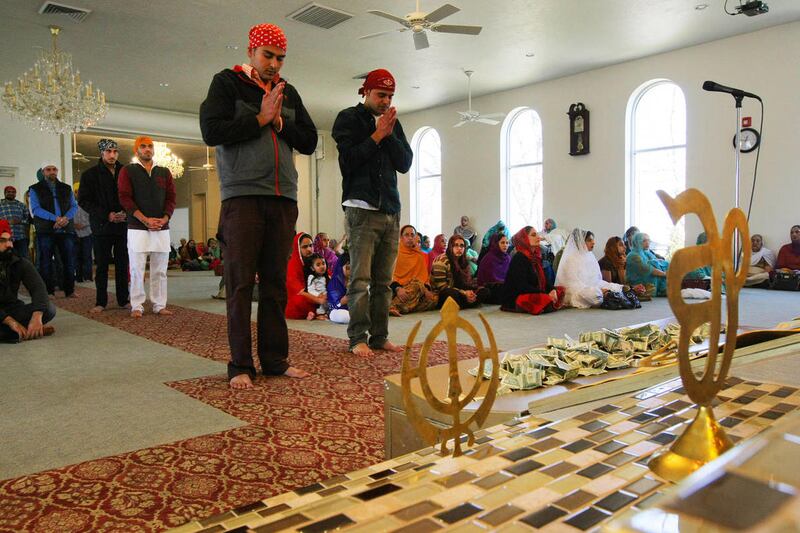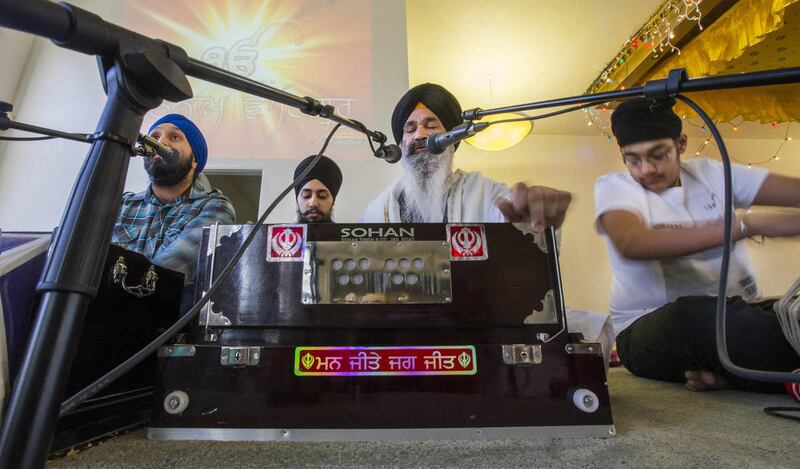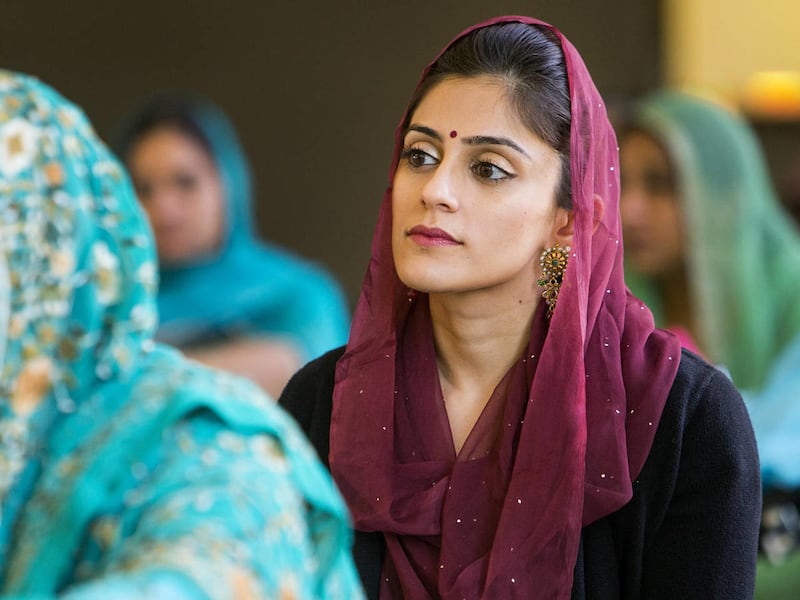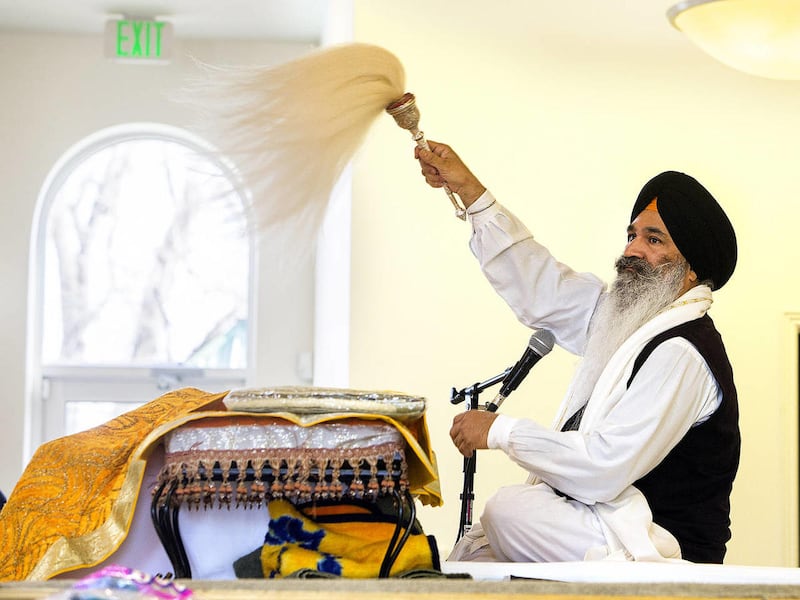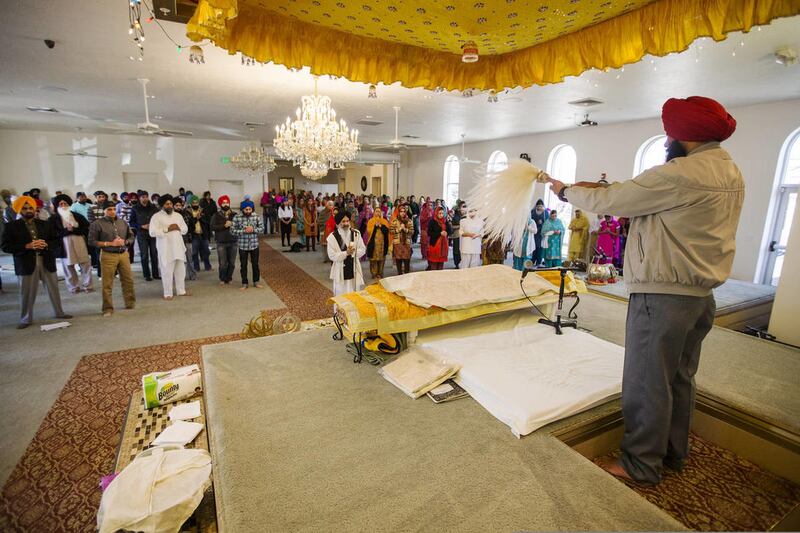TAYLORSVILLE — Music echoes through the dining hall at the Sikh Temple of Utah on a recent Sunday while members of the sangat, or congregation, mill in and out of worship services.
Worship seems to be a simultaneously informal and spiritual environment. Guests and regulars remove their shoes and cover their hair before entering the gurdwara, or temple. They hug, exchange words, and come in and out of the main hall while either priests or members of the sangat sing kirtan (hymns).
It seems nearly impossible to make it through a service at a Sikh temple without being invited to eat with members of the sangat. Food is served from the langar, a kitchen where food is served for free — unless, of course, people would like to donate.
"Anybody from any religion, any cause, they can come," said JB Singh, a trustee at the Taylorsville temple. "Any gurdwara in the world … there will be the same thing."
The langar represents a major tenet of Sikhism: humility, or the idea that all people are equal. It also embodies the idea of sharing liberally, one of the faith's main values (the other two being a conscious awareness of God and earning an honest living), according to information from the Sikh Temple of Utah.
During the interfaith season, local Sikhs will host a langar as a prelude to the meals they will provide during the Parliament of the World's Religions in Salt Lake City in the fall.
Local langar
A recent Sunday found more than a dozen people packed in the kitchen, preparing sweet and salty food for breakfast; shortly afterward, lunch preparations began.
Upstairs, many approached the altar where the Guru Granth Sahib, or holy book, sits surrounded by Sikh symbols, and placed their tithing donations. At least one child ran to the front to set money at the front of the altar. Upon entering the room, adults kneel and bow toward the Guru Granth Sahib before sitting on either side of the room.
Services at the gurdwara began at 9:30 and lasted until 1:30, with breaks in between. The hymns were piped down to those eating in the dining hall. Worshippers and guests sat on the floor during the kirtan and also while eating, as a sign of equality.
Autumnrose Stubbs, 15, visited the Sikh temple Sunday with friends as part of a class project.
"It was pretty spiritual," she said, adding that everyone she met there was welcoming and she enjoyed having a meal after the worship service.
Sikhism
Despite the welcoming attitude, many Americans have either negative or neutral opinions of Sikhs, according to a recent study by Hart Research Associates. One contributing factor to this was the high number of Americans who reported they did not know much or anything about Sikhism, which is something some in the religious group are working to change.
There are an estimated 300 Sikh families in Utah, according to Jagdish Gill, outgoing chairman of the Sikh Temple of Utah and father of Salt Lake County District Attorney Sim Gill. Most Sikhs in Utah attend either the temple in Taylorsville or the Guru Nanak Dev Ji Sikh Temple of Utah in West Jordan, he said.
They are among the half-million Sikhs who live in the United States, estimated by Hart Research Associates, and the estimated 25 million worldwide.
The founding of Sikhism dates back to 1469 with the birth of Guru Nanak. He was the first of 10 gurus, or prophets who sought to find truth outside the rituals and practices taught by religions of the time.
"We fully understand we may be still scratching the surface. We don’t even pretend to know the whole truth," said Surinder Bhatia, a lifelong Sikh who attends the Taylorsville gurdwara.
Almost 150 years after the birth of Guru Nanak, the fifth guru — Guru Arjan Dev — compiled and edited the holy book of Sikhism, called the Guru Granth Sahib.
In 1669, the 10th Nanak and last guru, Guru Gobind Singh, began a Sikh baptism ceremony and established Sikhism.
Guru Nanak began the langar as a way to promote equality, according to the BBC. It was promoted by the third guru, Guru Amar Das, who required kings and nobility to eat while sitting on the floor in the langar before meeting with him.
“That’s why everyone has to sit on the floor (whether) he’s a king or he’s … poor,” Singh said.
The tradition continues today wherever there is a gurdwara.
The Golden Temple, located in Amritsar, Punjab, India, is said to feed as many as 50,000 people every day.
"Any temple all over the world, food is served, everybody is invited," Gill said. "When we pray the final prayer we say, we say, 'God bless all humanity. We don’t say 'Bless the Sikhs,' you know. We bless Muslim, Hindus, all religions, every human being is the same.”
If you go ...
What: Sikh Temple langar (food) and kirtan (chanting) celebration, part of Interfaith Season
When: Saturday, Feb. 21, 5:30-7:30 p.m.
Where: The Sikh Temple of Utah, 4897 S. Redwood Road, Taylorsville
Email: wevans@deseretnews.com
Twitter: whitevs7



